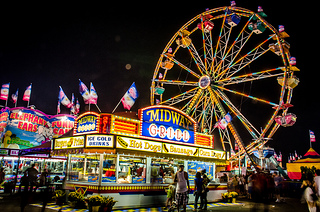
At PortMA, we have great client retention. Why? Because we do great research. I have been with PortMA for four years. From day one I have been managing the two event marketing projects I will be referring to today.
Both projects are large, national mobile tours that activate primarily at large events (e.g., state fairs, festivals). One is in tourism. The other is a mid-cost home goods product. They represent two very different products and services, but we employ similar execution strategies for both.
My clients’ clients are very into event marketing research. We have collected essentially the same set of survey questions from consumers after their event experiences for the past four years. To some, collecting the exact same measurement may seem mundane or boring, but having year-over-year measurement can provide much better insights and actionable data. My clients’ clients definitely have the right idea. Here are three reasons I believe this is true:
Program specific benchmarks
Time and time again, when presenting research, my clients say:
“I think what you are telling me is good, but I’m not sure.”
Of course they aren’t sure. They have no benchmark to which they can compare their performance! It’s kind of like eating frozen lobster all of your life and thinking it’s the best in the world. But, when you have your first fresh lobster, and then frozen never tastes quite as good again.
By collecting event marketing data year over year, you set performance goals within your environment against which you can measure future years’ performance.
Measure the impact of changes in your execution strategy
Both programs made significant changes to their execution strategies in the past two years. The results showed up in the research.
I will use the tourism program to prove this point. The program went from more of a “carnival” theme to a digital theme, in which patrons played games. Some of the games had glitches that made them difficult to play, thus reducing the effectiveness of the experience.
This was identified quickly from the survey research and field staff feedback, and was fixed. Event impact went back up quickly. Big and little changes to an execution strategy can make a big impact. If it’s significant, it will be picked up in the research and acted upon.
Measure the impact of outside forces on the experience
I definitely need to explore this more, but must share because I find it fascinating. We will use the home goods product this time as an example.
As I mentioned, this event marketing program has collected data for four years. Not a lot of changes had been made to the execution strategy. The trends in data haven’t changed a lot. Until this year!
There were significant increases in purchase and recommend intent, especially among groups of consumers you wouldn’t expect. With a little digging around, we have come up with the hypothesis that this product has a five-to-seven-year life cycle. 2014 must have been the year it stared over!
I will definitely let you know how this goes. I will also follow up with another blog post on the importance of collecting secondary research.
Summary – Why is Year-Over-Year Data Important?
Collecting event marketing data year-over-year provides an opportunity benchmark a program’s performance and present it to the client with a frame of reference. It allows account managers to measure the impact of changes in strategy. And it also provides a better opportunity to observe and consider outside forces that may be impacting the experience. The combination of these can be incredibly insightful to the client.
Completely switching your data collection objectives every year can beneficial in theory, but collecting data year-over-year can do much more, with the added benefit of validating the continuation of your experiential program.
Photo Source: https://www.flickr.com/photos/39908901@N06/
